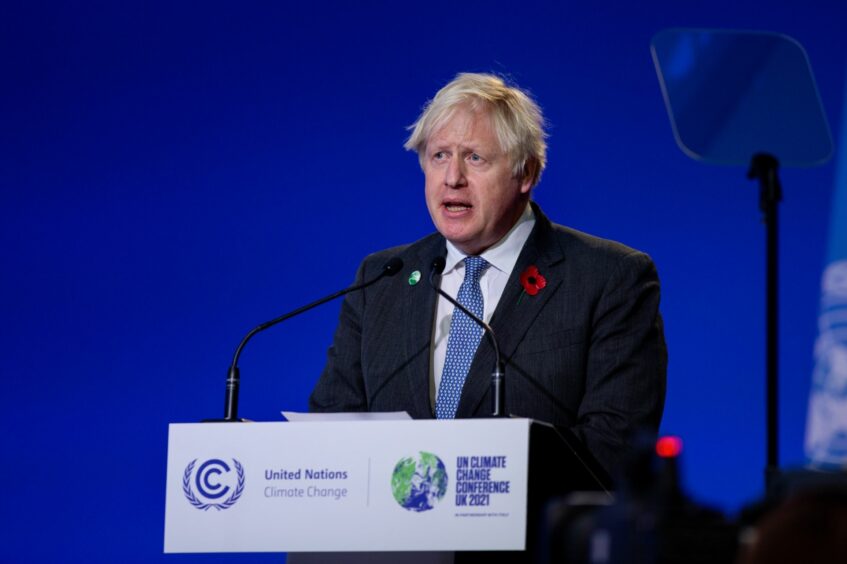
Boris Johnson is returning to the Cop26 climate summit as countries prepare to scrutinise a first draft of the deal that could be agreed at Glasgow.
News the Prime Minister was returning to the talks, where he welcomed world leaders last week, comes as Cop26 President Alok Sharma said negotiators were making progress but there is still “a mountain to climb” over the next few days.
A No 10 spokesman said: “The Prime Minister is going up to meet negotiators, to get an update on progress in the talks and encourage ambitious action in the final days of the negotiations.”
The first draft of the “cover decision”, to be published overnight, aims to address the gap between action by countries and what is needed to tackle the crisis in line with the global climate treaty, the Paris Agreement.
It could set out a path for accelerating action to cut greenhouse gases in this decade to keep global warming to 1.5C, with countries potentially revisiting their emissions-reduction plans in the next few years.
There are also likely to be moves to increase finance for developing countries to help them adapt to the impacts of a changing climate.
It will be published after new analysis suggests plans by countries to cut greenhouse gas emissions in the next decade put the world on track for 2.4C of warming.
The Climate Action Tracker analysis also warns that, based on action countries are actually taking, temperatures could climb to 2.7C over the century.
Under the Paris Agreement secured in 2015, countries committed to keeping temperature rises to “well below” 2C above pre-industrial levels and to pursue efforts to limit them to 1.5C and provide finance for poorer countries to help them cope with the crisis.
But domestic action pledged by countries in plans known as “nationally determined contributions” under the Paris deal was not enough to meet the goals.
And despite a requirement countries come back ahead of Cop26 with more ambitious plans for action up to 2030, the world is still far off track.
The next “ratchet” for increasing ambition under the Paris Agreement comes in 2025, though nations can set out new, enhanced plans at any time, and would see countries setting out action for post-2030.
With scientists warning that emissions must be cut by nearly half in the 2020s to curb temperature rises to 1.5C in the long term, leaving further action to the 2030s would mean letting the target slip away – and putting the world at risk of more dangerous sea level rises, storms, droughts, crop damage and floods.
Vulnerable countries are pushing for nations to submit national plans which are in line with limiting temperatures to 1.5C in the next year and long term plans to meet the target by 2023, though there is pushback from other countries.
Negotiators are also trying to hammer out the last parts of how the Paris Agreement will function, on carbon markets, transparency and common timeframes for action plans, to make it effective and operational.
And while countries have made pledges at Glasgow on a number of areas such as phasing out coal, cutting methane and halting deforestation, concerns have been raised about how they will be held to account on their promises.
Ahead of the publication of the draft cover decision, Mr Sharma said: “The time has now come to find political consensus on the areas of divergence and we have only a few days left.”
He added: “We are making progress at Cop26 but we still have a mountain to climb over the next few days.
“And what has been collectively committed to goes some way, but certainly not all the way, to keeping 1.5C within reach. The gap in ambition has narrowed.
“Now the world needs confidence that we will shift immediately into implementation, that the pledges made here will be delivered, and that the policies and investment will swiftly follow.”
He said the cover decision was likely to require negotiating teams to consult their leaders and capitals, and asked them to do so with urgency.
Recommended for you
